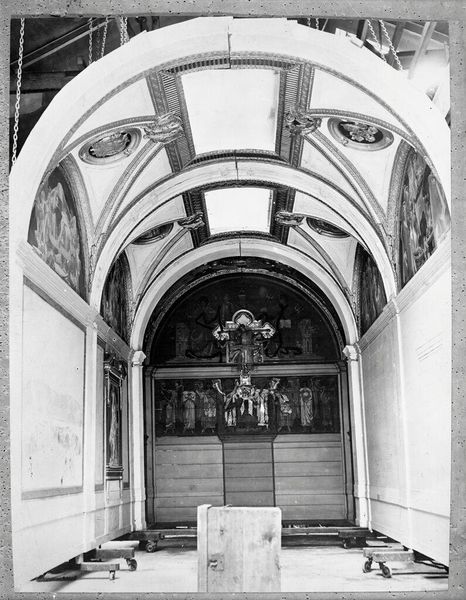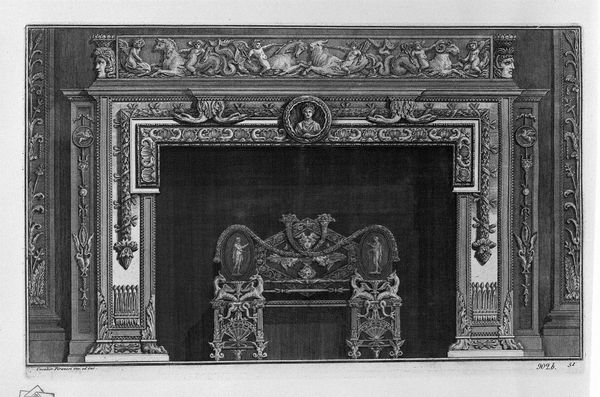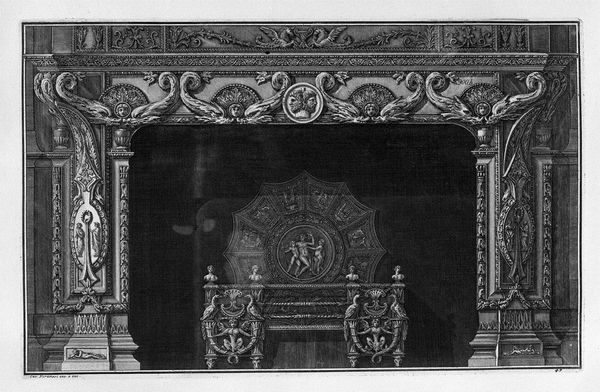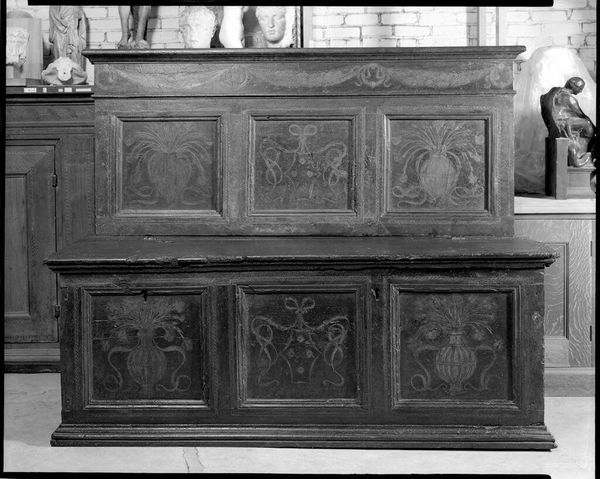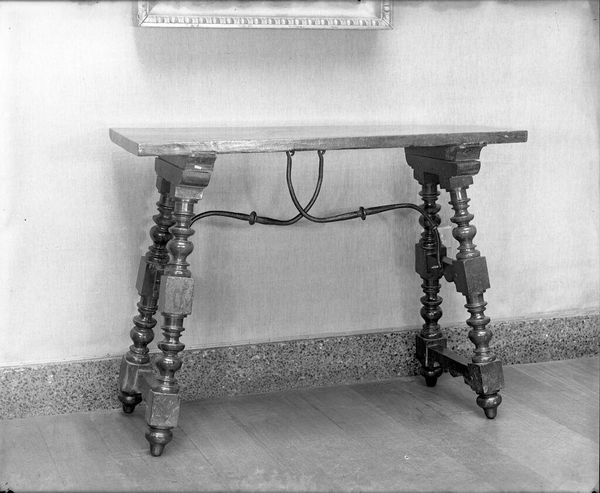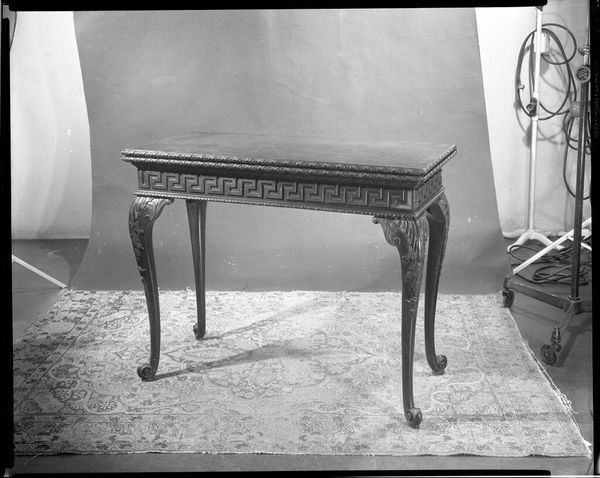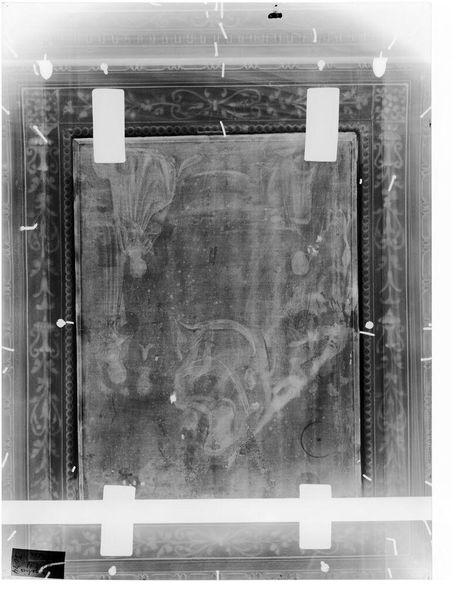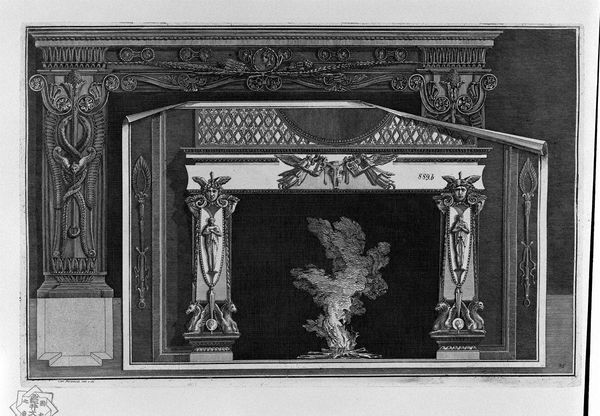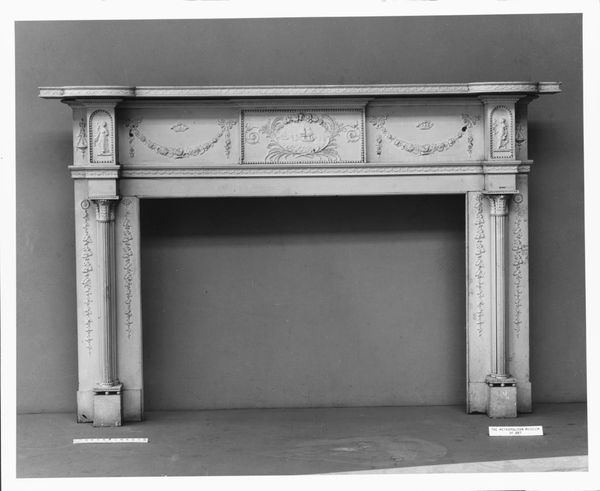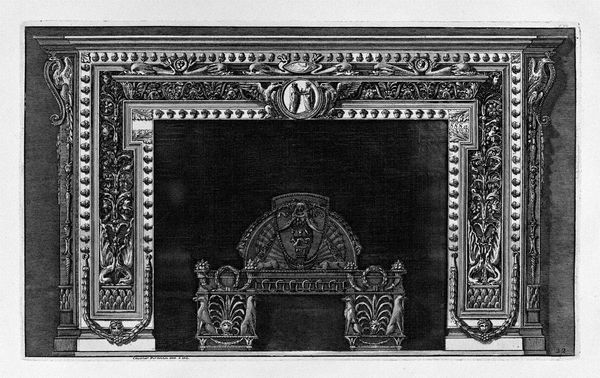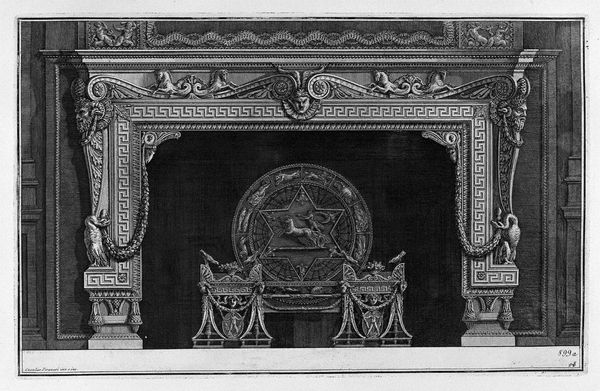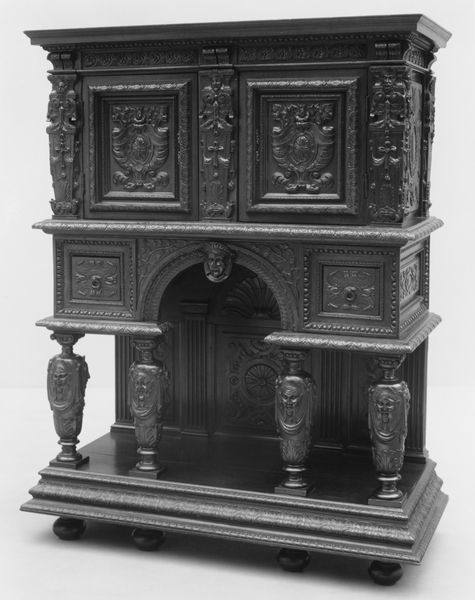
carving, wood
#
neoclacissism
#
wood texture
#
carving
#
furniture
#
wood
#
decorative-art
#
rococo
Dimensions: 30 3/4 × 71 1/2 × 41 1/2 in. (78.1 × 181.6 × 105.4 cm)
Copyright: Public Domain
Curator: This exquisitely crafted "Writing Table" dates from between 1755 and 1765. It is currently held at the Metropolitan Museum of Art. It has been attributed to the renowned furniture maker, Thomas Chippendale. Editor: It strikes me as exceptionally weighty, visually speaking. The wood, dark and with a powerful grain, combined with the dense structure, implies solidity and permanence. Curator: Chippendale was working at a pivotal moment. This piece blends rococo sensibilities with an emerging neoclassical taste. It reflects a desire for both elaborate decoration and a return to classical forms prevalent in the furniture of wealthy English landowners of the time. Think of it within the social ritual of letter writing and administrative duties that occurred within privileged homes. Editor: The details definitely reveal those converging styles. The arched panels with shell-like ornaments are echoes of the Rococo era but are contained within a more structured framework, it seems. The composition certainly seems very rigid. Curator: Absolutely. The choice of materials – fine, dark-grained wood – reflects not just wealth, but also a particular aesthetic. Chippendale catered to an elite clientele, crafting furniture that became symbolic of their status and power within British society and its colonies. This piece, beyond mere utility, acted as a stage prop, in some ways. Editor: It’s curious to think of furniture as a performative object. For me, it is the surface's complexity which provides visual interest. The interplay of light and shadow, tracing those grains. The artist or artisans seemed really concerned with textures. Curator: It's also essential to remember that, in its time, access to such items, and the spaces they inhabited, was severely restricted, influencing contemporary power dynamics. The act of commissioning a Chippendale piece solidified one’s place. Editor: Yes, seeing how the materials reflect this history allows me to now approach the visual composition with a newfound perspective, indeed. I realize how much historical information can influence perception. Curator: Precisely! We’ve merely scratched the surface regarding its artistic context and the historical threads it weaves, and that context really emphasizes the significance of a “simple” furniture object. Editor: It certainly challenges us to examine layers of value, not only from an aesthetic position but also one which is entirely human.
Comments
No comments
Be the first to comment and join the conversation on the ultimate creative platform.

